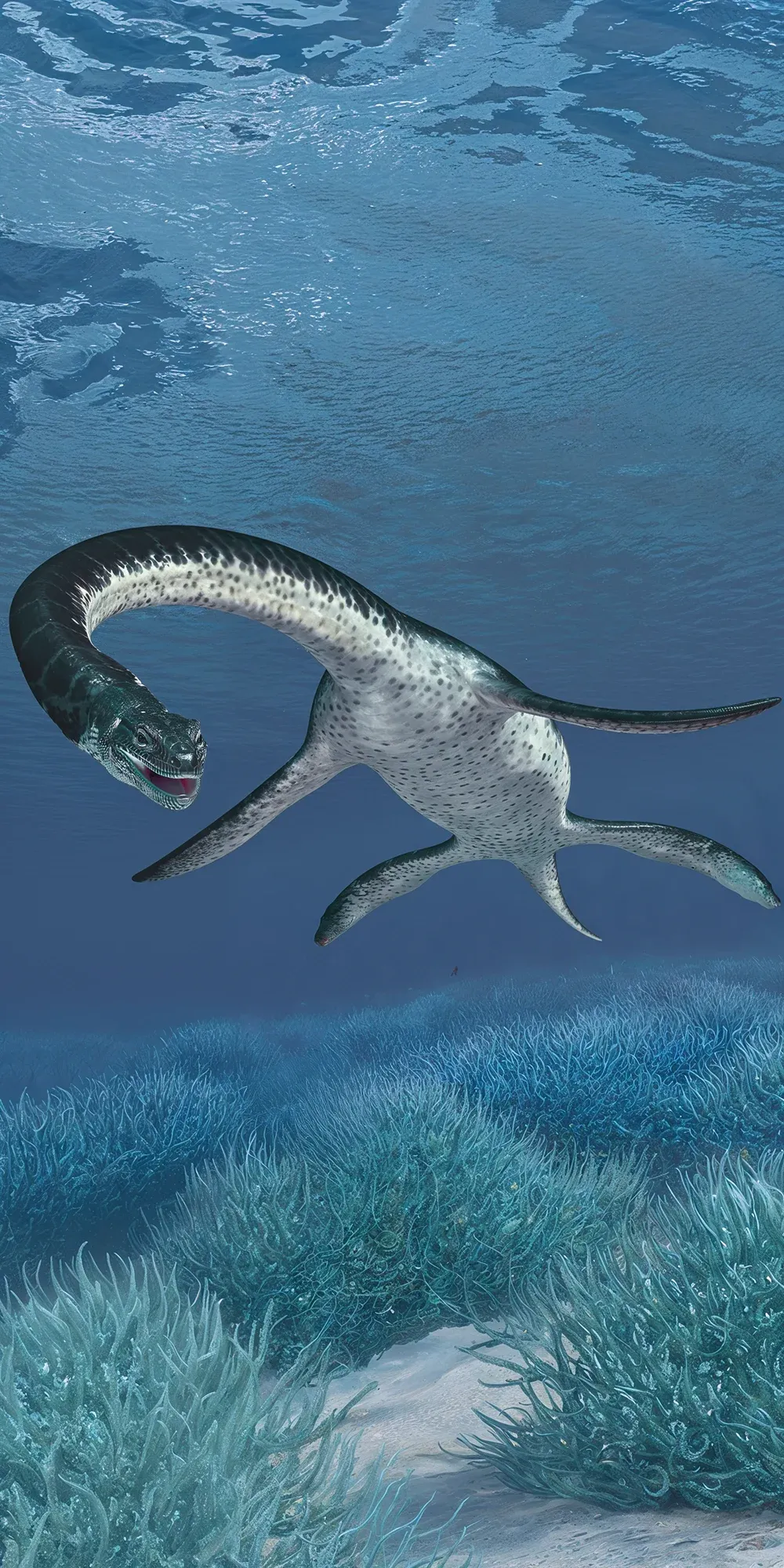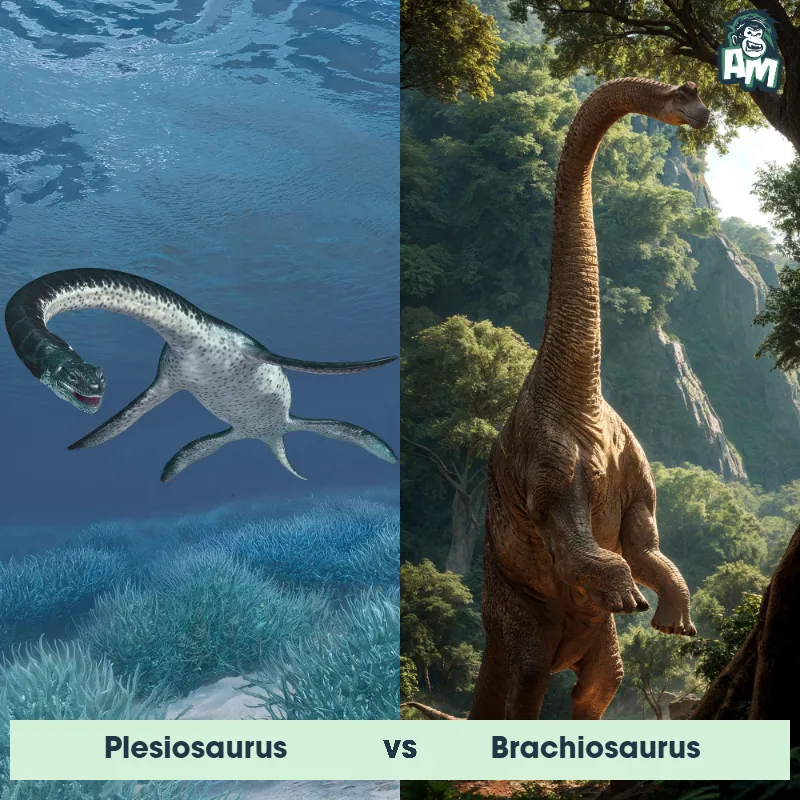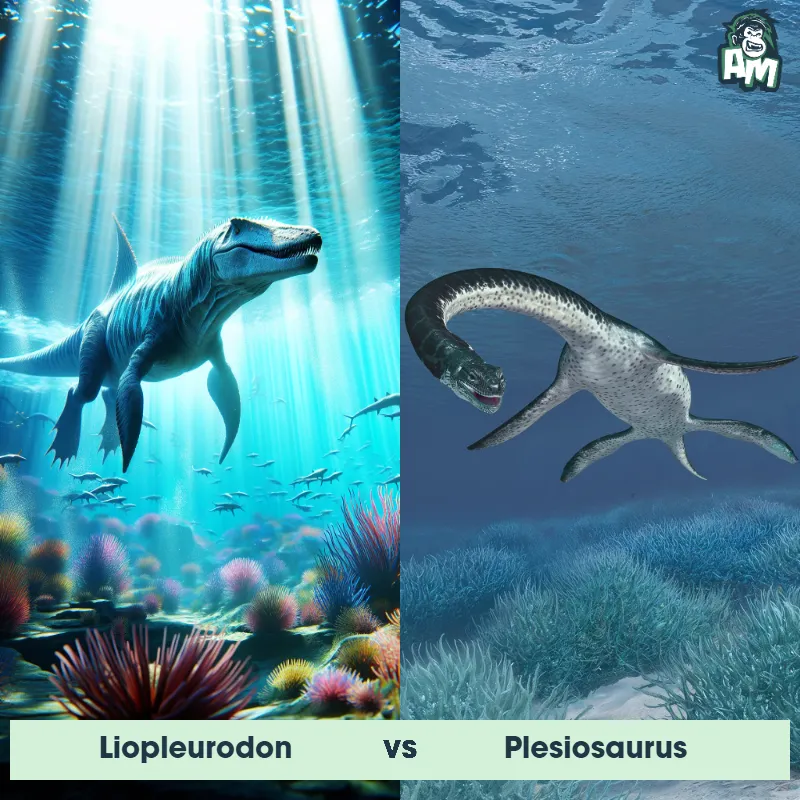The Plesiosaurus
The Plesiosaurus, a marine reptile from the Mesozoic era, is known for its long neck, small head, and paddle-like limbs. This prehistoric creature had a body similar to that of a turtle, with a four-flipper swimming style. Plesiosaurus could grow up to 15 feet in length and was a powerful predator in the ancient seas.

| Plesiosaurus | |
|---|---|
| Size | Up to 23 feet (7 meters) |
| Weight | Up to 2,000 pounds (900 kilograms) |
| Speed | 5 - 10 mph (8 - 16 km/h) |
| Key Strength | Speed in water |
| Biggest Weakness | Mobility on land |
| Scientific Name | Plesiosaurus |
| Family | Plesiosauridae |
| Habitat | Marine |
| Geography | Worldwide |
| Diet | Fish and small marine creatures |
| Lifespan | 25 years - 30 years |

The Plesiosaurus
The Plesiosaurus, a marine reptile from the Mesozoic era, is known for its long neck, small head, and paddle-like limbs. This prehistoric creature had a body similar to that of a turtle, with a four-flipper swimming style. Plesiosaurus could grow up to 15 feet in length and was a powerful predator in the ancient seas.
Fun Fact: Plesiosaurus is often depicted with its head held high above the water due to the mistaken belief that it had a swan-like neck, when in reality the reptile's neck was more flexible and likely was extended straight when hunting underwater.
| Plesiosaurus | |
|---|---|
| Size | Up to 23 feet (7 meters) |
| Weight | Up to 2,000 pounds (900 kilograms) |
| Speed | 5 - 10 mph (8 - 16 km/h) |
| Key Strength | Speed in water |
| Biggest Weakness | Mobility on land |
| Scientific Name | Plesiosaurus |
| Family | Plesiosauridae |
| Habitat | Marine |
| Geography | Worldwide |
| Diet | Fish and small marine creatures |
| Lifespan | 25 years - 30 years |
Plesiosaurus Matchups
We use AI to simulate matchups between the Plesiosaurus and other animals. Our simulation considers size, strength, and natural predatory behaviors to determine the most likely outcome.

Can't find the Matchup you want?
Create Your Own MatchupPlesiosaurus: Diet, Predators, Aggression, and Defensive Behaviors
What did Plesiosaurus eat?
Plesiosaurus primarily fed on fish, squid, and other small marine animals. Their long necks and sharp teeth were well-suited for capturing and consuming their prey underwater. They were opportunistic hunters and ate whatever was readily available in their marine environment.
Did Plesiosaurus have any predators?
As apex predators themselves, adult Plesiosaurus did not have many natural predators. However, younger Plesiosaurus individuals may have fallen victim to larger marine reptiles or sharks. Additionally, they might have competed with other marine predators for food sources, leading to potential conflicts over prey.
Were Plesiosaurus aggressive?
Plesiosaurus were not known to be inherently aggressive towards other creatures. They typically preferred to avoid conflict and focus on hunting for their food. However, they may have become territorial when defending their feeding grounds or mating partners.
Did Plesiosaurus fight?
While Plesiosaurus were not known for engaging in physical confrontations with other creatures for sport or dominance, they may have fought in self-defense or to establish dominance within their social structure. Their long, flexible necks allowed them to strike quickly and efficiently at potential threats, should the need arise.
How did Plesiosaurus defend themselves?
Plesiosaurus primarily relied on their agility, speed, and sharp teeth to defend themselves from threats. Their unique body structure, which combined a streamlined body with four powerful flippers, allowed them to maneuver swiftly through the water and evade potential predators. If necessary, they could deliver quick bites to deter attackers.
What was Plesiosaurus' biggest weakness in a fight?
One of the biggest weaknesses of Plesiosaurus in a fight was their relatively slow movement on land. Despite being well-adapted for an aquatic lifestyle, they may have struggled to move quickly or effectively outside of water. This made them vulnerable to attacks from faster terrestrial predators or agile prey that could outmaneuver them on land.
Fun Fact: Despite being commonly portrayed as a slow-moving creature, recent research suggests that Plesiosaurus was actually quite agile and could swim fast to capture its prey, utilizing its long neck to strike with precision.
Fun Fact: Plesiosaurus had sharp, conical teeth suitable for catching fish and other small marine animals, making it a successful hunter in its aquatic environment.












